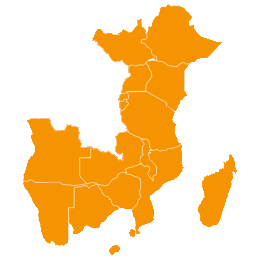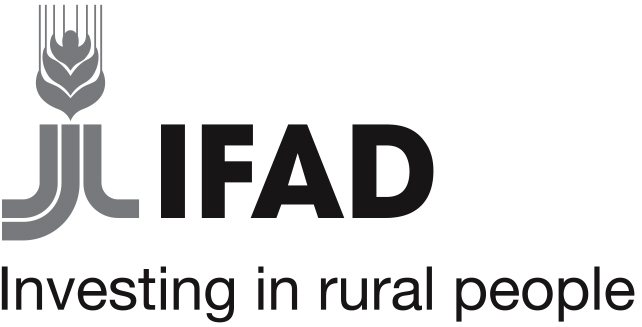REACTS Business-Building Consortiums
"We have narrowed down on key areas and commodities, that’s why we are talking about green grams and beans. So REACTS has helped us understand market opportunities and requirements."
Faith Livingstone Muthoni, Kenya (UTaNRMP Project)BACKGROUND
Regional markets are often overlooked in national food security strategies in East Africa. As a result, subsistence farmers lack opportunities to scale up and generate income.
REACTS (Regional East African Community Trade in Staples) connects existing regional organizations with suitable markets, locally and across borders.
WHAT’S INVOLVED
Organization and coordination
REACTS provides a neutral, centralizing function which spans farming, auxiliary functions like milling and sourcing raw materials, and market identification for staple produce. It operates across borders and acts as a broker for new business connections.
Education and skills development
The programme offers essential business skills to help people transition from subsistence farming to selling their crops for a profit and investing in their farms as commercial operations.
EXPLORE THIS SOLUTION
The REACTS project can offer
- knowledge and experience of implementing a consortium approach to business development for regional markets
- experience of providing training and development support to subsistence farmers and rural communities

Countries involved
Burundi, Kenya, Rwanda, Tanzania/Zanzibar, and Uganda
Project partners
Kilimo Trust
Project dates
From 2014 to 2018
Share this solution
Bookmark this solution
BookmarkShow Full Solution
Summary
East Africa's regional markets are largely overlooked in national strategies for food security, and lack support from agricultural development programs. The Regional East African Community Trade in Staples (REACTS) programme works to unify existing farmers' organizations, development partners and related institutions into larger consortiums, giving them a more powerful presence in the agricultural value chain and better access to markets, both local and international. Rural smallholder farmers are supported in becoming viable commercial entities, transitioning away from subsistence farming.
Challenge
Currently, regional markets are effectively left out of national strategies for food security, by both surplus and deficit countries. As a result, food markets are not given enough attention in agricultural development programmes. The goal of REACTS is to enhance incomes and accelerate wealth creation for smallholder producers and applicable business enterprises in the East Africa Community (EAC) Partner States. To meet this challenge, EAC Partner States needed an approach that would support smallholders in the following ways:
- Increasing the capacity of producers to respond to opportunities presented by local and cross-border markets;
- Preparing them to meet the demanding standards of purchasing companies in EAC; and
- Enabling them and their organizations to link up with regional cross-border markets and consumers and strengthen their access to national markets for food products.
Solution
REACTS created a strategy that empowered small-scale farmers to access markets through the formation of consortium groups, which link them to key players in the value chain. This connected farmers producing food commodities to regional and cross-border markets, especially urban, as well as local markets. Ultimately, the target was to move food and nutrition security in the East African Community (EAC) region away from high-risk subsistence farming into lower risk trade-based systems.
The consortiums are made up of existing local institutions, such as farmer’s organizations, community groups, local service providers and private sector actors. Once united, they can build strategic partnerships amongst key players in the food products value chain. By leveraging each partner’s comparative advantage, the group can forge linkages between businesses and markets across the region.
The programme also enables agricultural development projects in the region to align, build core skills, and work with relevant partners to help smallholder businesses producing target food commodities to respond effectively to opportunities found in regional markets. There is a three-pronged strategy to achieve these objectives:
- Improving the technical and business skills of farmers, their institutions, and platforms to gain market access.
- Building core skills and strengthening relevant market off-takers and traders, service providers, and NGOs/CBOs facilitating trade in food products.
- Strengthening institutions responsible for food security, and regulatory bodies responsible for cross-border trade in food products.
Results
There is no systematic analysis of the programme's results, its impact on the incomes of smallholders, or the capacity of other actors involved in the consortium, as yet.
The main result expected from the adoption of the consortium approach is smallholder farmers gaining access to more profitable regional (cross-border) markets where they have a comparative advantage. This is expected to contribute to an increase of 20 per cent in the incomes of at least 15,000 small-scale farmers producing food commodities under IFAD-supported projects in the EAC Partner States.
The approach is also expected to improve the marketing and managerial skills of:
- Market actors specializing in cross-border trade.
- Rural-based traders undertaking collection, consolidation and primary processing of commodities.
- Service providers necessary to support cross-border food trade.
- Government agencies responsible for facilitating food trade in relation to customs, food quality and safety standards, and tariff and non-tariff barriers.
Lessons learned and potential for replication
While it is difficult to draw specific lessons in the absence of specific measured outcomes, the following points have emerged:
- The consortium approach could be made more effective by including activities aimed at linking farmers’ groups with agro-dealers for improved and assured access to inputs.
- Greater emphasis should be placed on building the business skills of farmers’ groups.
- Apart from its use as a tool to encourage business and market linkages across the region, the consortium approach is also relevant at national level for a broad range of activities.
- Improved documenting of success stories would encourage greater participation and provide evidence for scaling up.
Next steps
The next priority is to collect evidence of the impact of the consortiums on farmers’ income, the sustainability of the approach and its applicability to other agricultural products and sectors.
Solution Document Downloads
Last update: 09/08/2018


